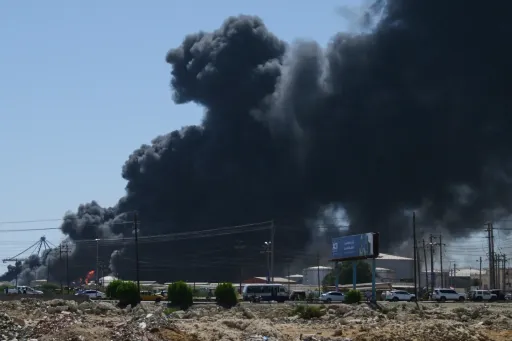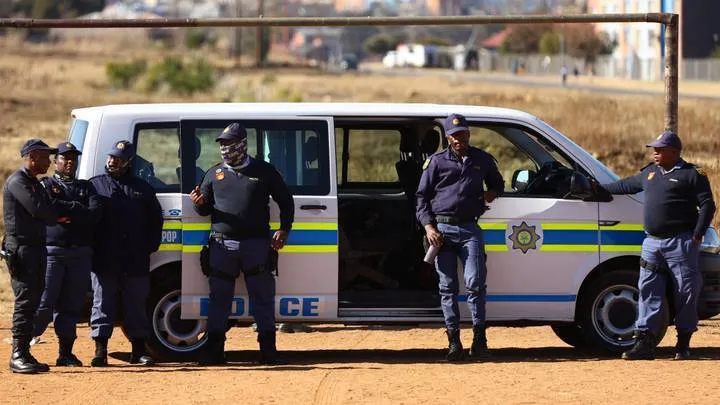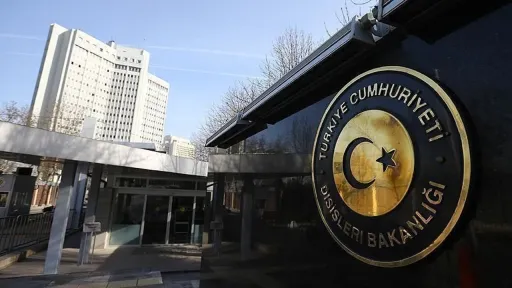Ruqaya Saleh has lost count of how many times she has fled.
South, then back. South again, then back. Each time, she would gather her children and scamper out of Al Fasher, hoping the next place would be safer.
The last time, she made it 60km west to Tawila, where she told her story to a Médecins Sans Frontières (MSF) team.
“We suffered terribly from repeated displacements,” Saleh said.
In the last three weeks, 57,000 Sudanese fled to Chad. Among them is Bakboula Mamat Issa, 33, with her six children, who undertook a perilous journey from Al Fasher to Tawila before moving on to Chad.
“We walked for 3 days to reach Tawila. There are still many people there waiting to find some means of transport to flee to Chad, hoping to get a ride on a truck, like those used to carry food,” Issa narrated to MSF.
Issa and Saleh, having escaped Al Fasher, are among the lucky few. Those left behind may now have no escape.
The capital of Sudan's North Darfur has virtually become a death trap. On October 11, more than 60 civilians died when two drones and at least eight shells struck the city.
Three days earlier, the paramilitary Rapid Support Forces shelled a hospital, killing at least 12 people. Two days before that, another attack on a residential neighbourhood killed 13 civilians, including seven children and a pregnant woman.
The October bloodshed followed ten days of sustained artillery fire, drone strikes and ground incursions the previous month that left 91 people dead, according to the UN human rights office.
Satellite imagery analysed by Yale University's Humanitarian Research Lab portends worse. The paramilitary Rapid Support Forces (RSF), engaged in conflict with the Sudanese Armed Forces since April 15, 2023, has completed a 57-km earthen wall that fully encircles Al Fasher.
With all major exit routes sealed, hundreds of thousands of civilians are trapped inside the city. Yale researchers describe it as "a dangerous escalation".
"Al Fasher is on the precipice of an even greater catastrophe if urgent measures are not taken to loosen the armed vice upon the city, and to protect civilians," warns the UN High Commissioner for Human Rights, Volker Türk.
Strategic prize
The stakes couldn't be higher in Sudan than control of Al Fasher, which remains the last major city in Darfur outside the RSF's control and the Sudanese army's final stronghold in the region.
Sudanese historian Tarig Mohamed Nour, who spent his childhood there, describes Al Fasher as a "strategic old city" that once served as the seat of power for the ancient Darfur Kingdom.
Its importance is primarily logistical. "There are ways from Darfur that directly take you to North Sudan all the way to Egypt, to Chad in the west and to central Sudan," explains Nour, a lecturer at Türkiye’s Bilecik Şeyh Edebali University.

For RSF chief Mohamed Hamdan Dagalo, aka Hemedti, Al Fasher is crucial for his forces.
RSF had joined forces with Abdel Fattah al-Burhan's Sudanese Armed Forces to oust Omar al-Bashir from power. When the two fell out in April 2023, their rivalry plunged Sudan into a debilitating conflict that continues to this day. The battleground shifted to Darfur in May 2024.
Nour believes the RSF envisions Al Fasher as the administrative centre for a parallel government, hoping "they will have Darfur separated from all of Sudan".
Humanitarian catastrophe
MSF says it is gravely concerned for the hundreds of thousands of civilians who remain in Al Fasher.
"Since violence escalated in North Darfur over the last year, all the alert thresholds have been crossed. Violence, particularly on ethnic lines, is reaching a level rarely seen before," says Michel-Olivier Lacharité, MSF's head of emergency operations.
The siege has created more than a military crisis. "The allies have besieged the area, blocking food, water and aid. Famine is spreading," Lacharité points out.
Health services have collapsed. Mathilde Simon, MSF's humanitarian affairs adviser, says the global charity has been forced to halt operations in Al Fasher and Zamzam.

Renewed genocide
Analysts fear the RSF has returned to Darfur to complete the genocide it began 20 years ago.
The RSF is seen as a rebranded version of Janjaweed deployed in Darfur by the al-Bashir regime from 2003. Hemedti remains at the helm of this militia.
The Yale report reveals that fire damage is consistent with deliberate, house-to-house clearance operations.
Beyond destroying homes, schools and hospitals, sexual violence has once again become a deliberate component of the war strategy.
The international community's failure to stop the atrocities baffles Nour. "We as African communities have to think about how we can solve our problems, he says.
"We have to educate our people, educate our children that peace is important. I usually give advice to anyone: please try to solve your things without a war, because when the war starts, it's like a fire – you may not know how to stop it again."
Unceasing torment
What began in 2023 in Khartoum has exploded into a full-scale war across Sudan. UN and local figures put the death toll at more than 20,000, with 15 million people displaced by the violence. US-based researchers estimate the actual death toll could be as high as 130,000.
Nour, now in Türkiye after fleeing Sudan, and Ruqaya, still searching for shelter as winter approaches in Tawila, both long for better days in Al Fasher.
"My mother used to tell me how sweet Al Fasher is," Nour says wistfully, holding on to a fond memory from before the city became a bloodied battleground in Sudan's internal war.
























